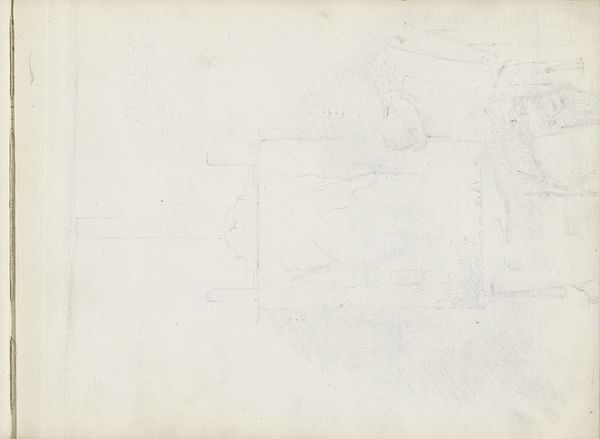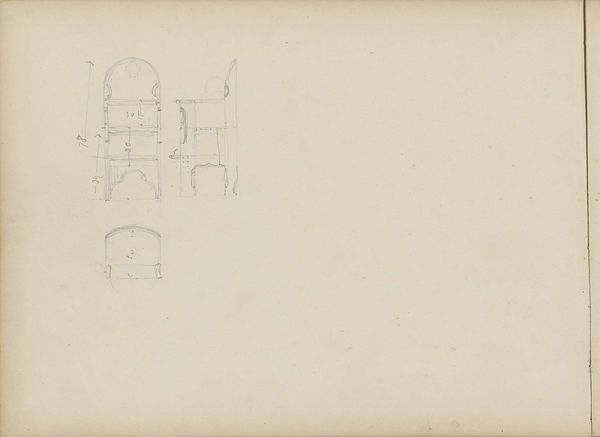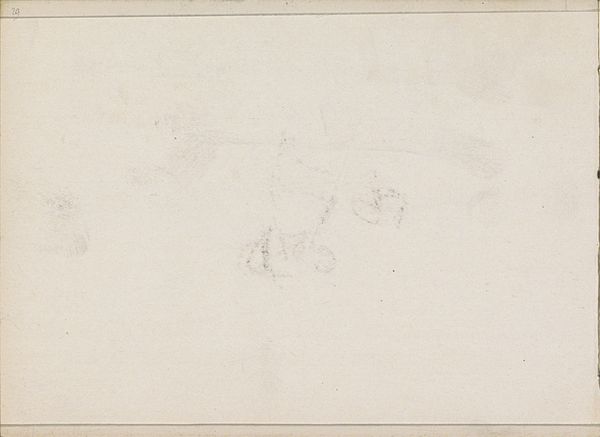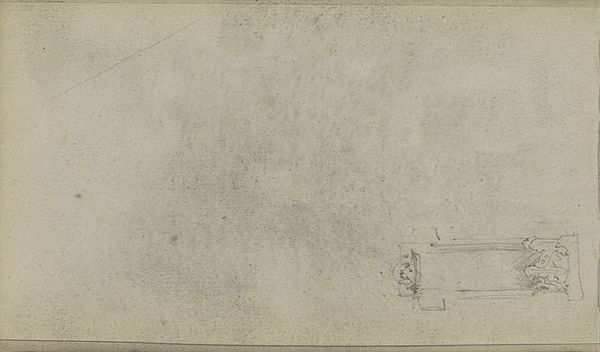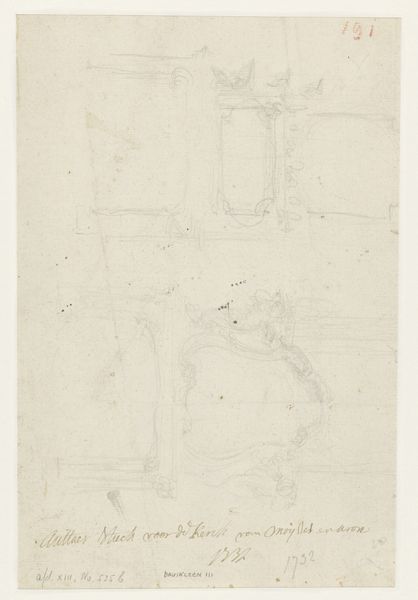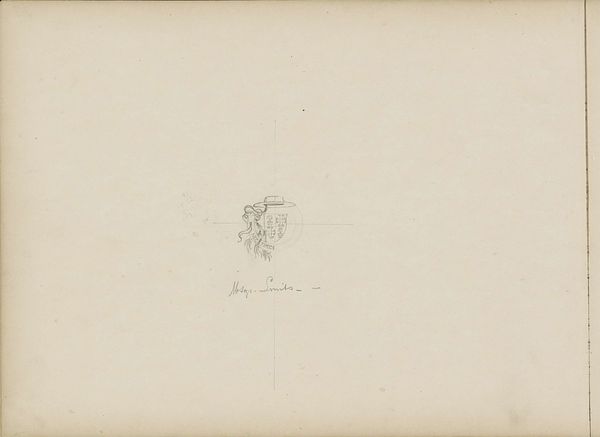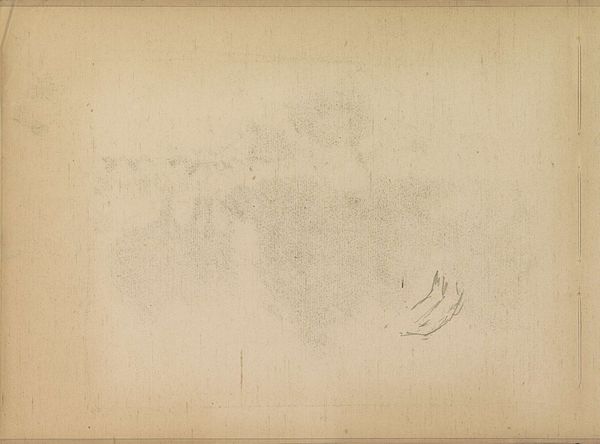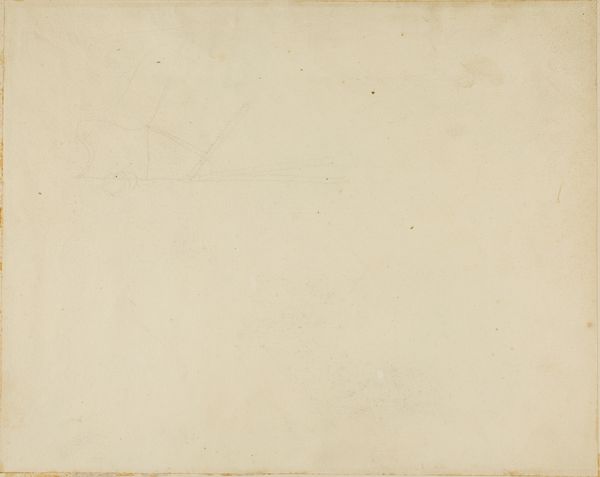
drawing, paper, pencil
#
drawing
#
water colours
#
landscape
#
paper
#
form
#
geometric
#
pencil
#
line
Copyright: Rijks Museum: Open Domain
Curator: Welcome. Today we are looking at Isaac Gosschalk's "Tongewelf," a pencil, watercolour, and ink drawing on paper made between 1862 and 1867. Editor: My first thought is: ethereal. It feels more like a fleeting idea, a suggestion of form, than a solid depiction. Is it unfinished? Curator: Perhaps incomplete, but that might be the point. It exemplifies Gosschalk’s meticulous study of architectural forms. We see the geometric foundations, the very bones of the barrel vault structure, laid bare. His process here, the delicate layers of pencil and watercolor, prioritizes form and structural integrity over representation. It is a breakdown of traditional artistic boundaries. Editor: Right. And in its refusal to solidify into a complete, polished image, I see an interesting connection to the labor and even exploitation embedded in architectural design during the industrial era. This preliminary rendering stands as a ghostly testament to architectural aspirations versus their sometimes problematic realisation. Consider the labourers often excluded from the final built landscape. Curator: Precisely. And from a materialist point of view, think of the provenance of the materials used both for the construction it depicts, and those used in creating the sketch itself - the source of the paper, pigments, graphite: whose labor went into procuring those materials and how are their stories tied into the rise of architectural documentation during this period? Editor: Good point. The geometric elements create an image that is visually intriguing but the lightness and incompleteness speak volumes about not only architectural and engineering precision of vaulted design, but the cultural climate surrounding these building methods. Curator: These buildings, these structures were meant to convey power, solidity, and permanence, whereas the drawing captures it’s ephemeral presence, or perhaps even the initial vision? Editor: Ultimately, Gosschalk invites us to reflect upon these geometric forms not simply as design elements, but as complex cultural artifacts. Curator: By stripping away the facade and highlighting the foundational elements, Gosschalk leaves space for many layers of interpretation. Editor: Absolutely. And by reminding ourselves of what isn’t there, what is only lightly rendered, we enrich our understanding of both the drawing itself and the structures that may have sprung from such technical, yet strangely sensitive observations.
Comments
No comments
Be the first to comment and join the conversation on the ultimate creative platform.

